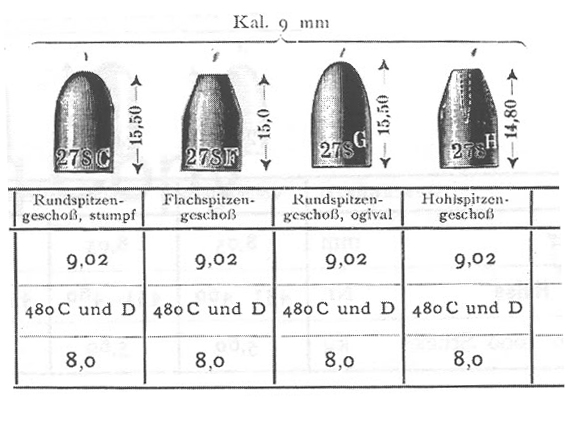The 9×19 is the most popular handgun cartridge of our era, serving military, law enforcement, and civilians worldwide. And unlike other handgun cartridges of the same general time period, such as the .38 Special and the .45 ACP, the 9×19 — officially 9x19mm Parabellum, 9mm Luger, or 9 mm NATO (I will explain each of these and what they mean throughout the series) — seems to actually be gaining ground in the market today. It remains both maligned and glorified, but few know the story of its origin and development. In this multipart series, we will explore that history, and conclude with a discussion of the 9×19 as it stands today.
It is unusual for a cartridge’s name to be attached to a specific firearm, but many people still refer to the 9×19 as 9mm Luger. Named after its designer, Georg Luger, the Luger pistol is probably the most well-known historical handgun in the world. It was put to service in dozens of countries even after World War II, and more Lugers were made in 9×19 than in any other caliber. Considering the arguments of recent decades over the efficacy of the 9×19 compared to other handgun calibers, it might interest the reader that the 9×19 was an attempt to create a cartridge with more stopping power. After all, the first Lugers to leave factories in Germany were not chambered for 9×19, but 7.65x21mm Parabellum.
The Luger’s overall craftsmanship and attention to detail have always been legendary, but in the early 1900s its design, too, was state of the art. It drew the interest of many countries, and several adopted it quickly as a service pistol. Even the United States and Britain were interested in the Luger. However, recent experience in colonial wars had led both of them to conclude that the 7.65 Parabellum was diminutive and potentially ineffective. Moreover, the U.S. had found its then-current service pistol caliber, .38 Long Colt, woefully ineffective in the Philippines, and while the British did believe they had an effective cartridge in the .455 Webley, they were interested in the Luger design concept.
Both the United States and Britain requested sample lots of the Luger pistol between 1900 and 1901. Britain ordered a very small lot of pistols and ammunition, but rather quickly turned down the Luger in favor of existing and potential pistol models chambered in .455 Webley. Meanwhile, the United States ordered 1,000 Lugers and sent them to cavalry trials. Although the evaluators recognized the Luger as a fine handgun, field testing on live animal targets yielded mixed results, and the Luger was ultimately rejected as underpowered in 7.65 Parabellum.
Going back to the drawing board, Georg Luger and the German arms company DWM worked through several permutations to create a more modern and more lethal handgun cartridge — one that would allay the misgivings of current and prospective customers, and lead to increased sales. The first real product of their labor was the odd and now extremely rare (it’s doubtful you’ll find even a single round on the collector’s market) 9×18.2mm bottlenecked cartridge — more or less an upscaled 7.65 Parabellum. But when its test results were deemed unsatisfactory, Georg Luger reset once more, and then conceived the straight-walled 9×19, which featured unambiguously increased terminal ballistics over the 7.65 Parabellum. Three Luger pistols so-chambered were then shipped to the United States for trials. Nobody knew it at the time, but those prototypes represented the inception of both a famous firearm-ammunition pairing, and perhaps the longest-reigning and most ubiquitous pistol cartridge in history.

Most people don’t know it, but the 9x19mm Parabellum was the first successful cartridge that headspaced on the casemouth instead of a rim, semi-rim, belt, or shoulder; this was a major technological breakthrough that was quickly copied by numerous other designs.
Also, the US didn’t select the Pistole Parabellum as their service pistol because the order for 1000 additional test models in .45 ACP was never forwarded by the DWM representative in the US (for reasons lost to history, and probably not an insignificant amount of liquor), thusly it was never tested in that caliber (and the remaining prototypes are priceless).